Christopher Nolan Did Such An Exceptional Job At Making The Audience Feel The Tension And Horror During
christopher nolan did such an exceptional job at making the audience feel the tension and horror during the trinity test sequence even though we already knew the outcome and what it meant when they realized that the bomb actually works
More Posts from Sayaosi and Others
Queerness, Gentrification and Cultural Genocide in the film La Mission
This is an essay I wrote as part of my pursuit of an Ethnic Studies degree at Cal State East Bay during the Fall Quarter 2017. This will be part of a series of essay posts from my classes at the end of my school quarters. This and all of my essays were written under my legal name, Dennis Camargo.
In the film La Mission, the audience is introduced to Che, a former prisoner and alcoholic, and his son Jes, a student just about to graduate high school. The plot of the film focuses on the tumultuous relationship between Che and Jes after Jes was inadvertently outed as a gay man by his father stumbling across photos of Jes in a gay club. In the film there is an underlying tone of Che interpreting male homosexuality as a force of consumerism and gentrification in La Mission, the area of San Francisco where the film takes place. Che is unable to reconcile his son’s queerness, therefore branding his son as a race trader and being complicit in the cultural genocide of a historically Mexican district of San Francisco.
Very early in the film, the audience is met with Che’s fears of La Mission falling victim to gentrification like many other parts of San Francisco. Che confronts his neighbor Lena, who has filed a complaint against Che with their landlord for blocking the sidewalk with his lowrider. The audience sees Che’s defensiveness against this complaint as encroachment of seemingly God-given right as a Mexican man to exert his dominance and symbols of masculinity in his Azatlan, the mythical homeland of Aztecs and by extension Mexican culture. He states “…after all you hipster types are tired of slummin’ it, I’m still going to be here,” to Lena, a black woman who personifies a typical hipster/gentrifier complete with fixed gear bicycle and an interest in New Age beliefs (00:10:15). Despite her race, her hipster interests are typified as white behavior and therefore is an extension of the cultural genocide of La Mission district. While her lifestyle is not necessarily queer, it is accepting of queerness which opens the door for more white culture to smother the hypermasculine, hyper heterosexual Chicano culture of La Mission.
Che has a very complex interpretation of his son’s queerness because of his history as a convict, his addiction to alcohol and the association of gay culture with alcohol, whiteness and consumerism. Che’s few associations with gayness are exemplified with the line “Is that why he’s manhandling you like you’re some Mexican bitch?,” (00:27:05) when he confronts Jes with the photographic evidence of is encounter with his white boyfriend. Another instance is an ad for here!, a gay-oriented on demand television channel being advertised on the busses he drives (00:40:26). These two instances can be interpreted as colonial, capitalist gentrifiers of his Azatlan, making Jes la Malinche, a historical figure vilified by Mexican people for selling out the Native Mexicans to the Spanish (Garsd). On a very tangential note, his association with queerness and clubbing, therefore alcohol use, can be seen as a white drug adulterating a perfect Aztec life, as there tremendous pride in Aztec identity among those who pride themselves as Chicano. This adulteration can be tied to the trope of Native Americans struggling with alcohol abuse.
Conclusively, while Che’s interpretation of queerness and white hipsterdom gentrifying traditional black and brown neighborhoods is not necessarily incorrect, he fails to see the nuances of being queer. Queers of color can be equally weary of gentrification and cultural genocide of historically black and brown areas and are willing to protect la raza from falling victim to capitalism. Understanding of the intersectionality of being brown and queer will help in the effort against gentrification.
Citations
La Mission, www.amazon.com/Mission-Benjamin-Bratt/dp/B003ZZ4H6K/ ref=sr_1_1? ie=UTF8&qid=1509596248&sr=8-1&keywords=la%2Bmission&dpID=513tWYMpb7L&preST=_SY300_QL70_&dpSrc=srch.
Garsd, Jasmine. “Despite Similarities, Pocahontas Gets Love, Malinche Gets Hate. Why?” NPR, NPR, 25 Nov. 2015, www.npr.org/sections/goatsandsoda/2015/11/25/457256340/despite-similarities-pocahontas-gets-love-malinche-gets-hate-why.
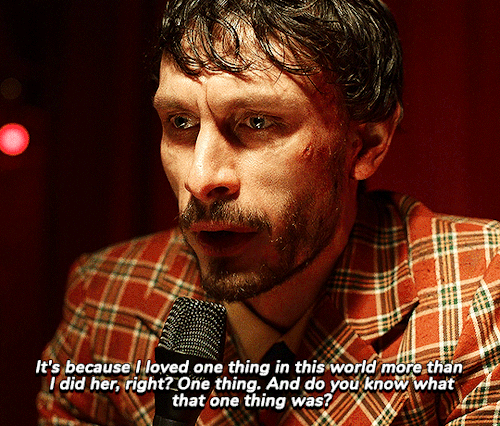


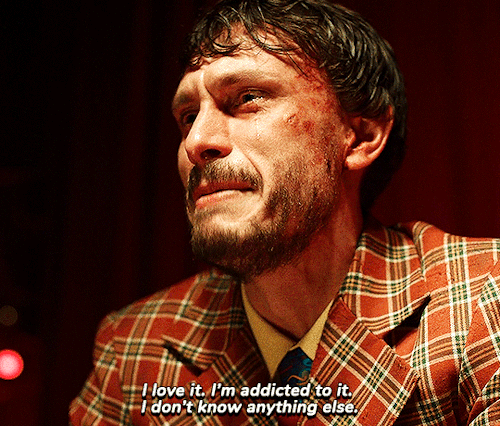



BABY REINDEER (2024) Episode 6.
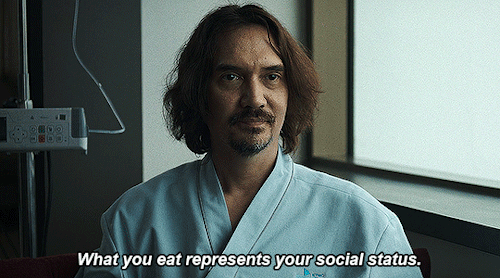





HUNGER (2023) dir. Sitisiri Mongkolsiri







THOMAS SHELBY + smoking






House of Hummingbird 벌새 (2018)
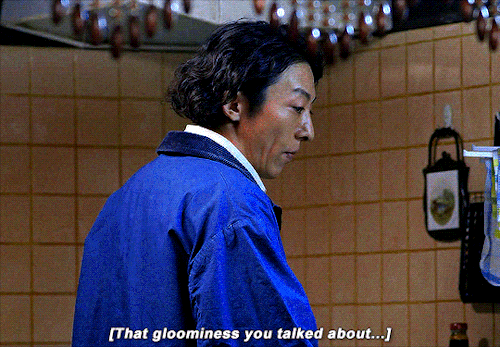

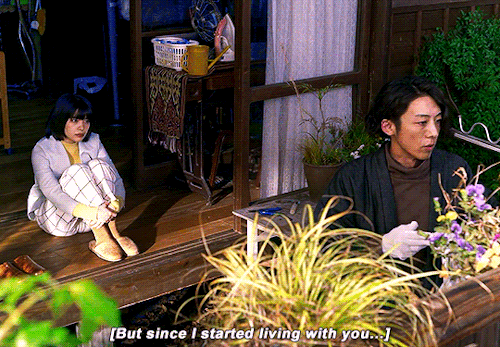



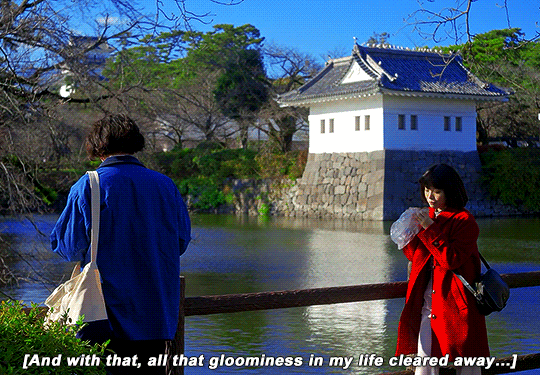
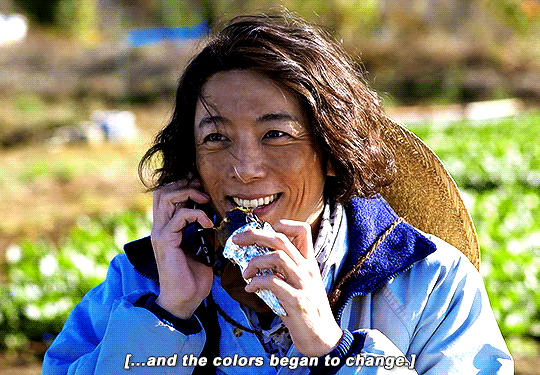
I don’t want to go back to being alone.
It's genuinely so baffling to me when people think it's weird or sad that I want to stay single forever or that I'm going to "die alone". I have tried not being single I truly don't understand how people do it. What do you mean there's another person just like. In your house. Where you live. All the time, even when you get home from work?!? Just. I guess do you and chase your bliss and whatever but damn. Couldn't be me. No fucking thank you I'm good.
Amores perros (2000)

Dogs shouldn’t have to put up with us. The characters in Amores perros create a cruel world, or perhaps they think they can only succeed in an illegal manner. But there are dogs in all of these people’s lives, too. They come in many forms, but they suffer in similar ways. Cofi is a rottweiler who has a very “no thoughts head empty” energy during many scenes. But he is a killer. In another world Richie is like a toy but suffers because his masters are incompetent. He gets lost under the ground and maybe dies. Iñárritu understands the experiences of his characters and uses them to great effect. The dogs in this film are vessels for empathy. They distill their owners’ existences down to the most powerful truth. Much blood is spilled but the dogs are constant. It is a cruel experience for the audience because there is no rest for them; they simply have to survive the film.
Amores perros represents Alejandro Gonzalez Iñárritu’s best and worst instincts. It has all his talent but also all his worst impulses. He adopts a narrative structure like the films of Quentin Tarantino or others, a tapestry of characters interweaving. The camera moves with a hand-controlled panic to pull us into the world. We constantly bump into other narratives, one line intersecting with the other as these characters affect each other in small or large ways. Minor details in one moment are important in others. Iñárritu creates a trap for his characters and then has doubts if he wants to engage. At times he has great power. It’s exciting and sad. I too aspire to be a radical liberal turned doggo-tor. But it’s incredibly hard to watch the scene when all the dogs in our protect die because Cofi only knows one way of life. Humans destroy the lives of dogs. I openly cried for the final minutes. We cannot learn. We cannot change. Young people never learn to find healthy outlets for their emotions. The only way to succeed is to offend and cause suffering.
THE RULES
SIP
Someone says ‘Cofi’ or ‘pandejo’.
Grainy TV footage.
Crazy baby toys.
An advertisement for Enchant appears somewhere.
Sick ‘00s beat drops.
A sum of money is named.
BIG DRINK
A part title appears onscreen.
The narrative jumps perspectives.
A scene isn’t abjectly miserable.
The thing about Wes Anderson's films is that I don't always connect with the stories he is telling, but by fucking god do I appreciate the craftmanship that went into making them.
Watched/read
Feminine and feminist cinema.
House of Hummingbird: the main character, Eunhee, was in eighth grade in 1994, which is to say she – and Kim Bo-ra, the director – are nearly exactly my age. It’s a sensitive, Proustian evocation of a ‘90s South Korean female adolescence, parts of which I relate to (those pagers!), parts of which I knew nothing about (one date chyron I won’t spoiler, that drew gasps from the audience), and parts of which are evergreen (dysfunctional Asian families where the only love languages are verbal abuse and food, and emotional support is non-existent even for favoured first sons). The sporadic outbursts of domestic violence, in particular, are so true to life as to be triggering; it made me think of people IRL to whom I’d only recommend the film with a warning. The actors are all very good but the one I’ll think back to is Kim Sae-byuk, who plays Eunhee’s mysterious yet relatable Chinese tutor and imbues the supporting character with a vast sense of inner life. The camera watches her face and you feel what she’s feeling for this girl, from the other side of the unidirectional gulf that is the Tired Adult™ looking upon an eighth grader much like she once was.
21st Century Girl: a thematic omnibus of short films commissioned from emerging female Japanese filmmakers, each of which has to be about love, gender, or sexuality in some way. One does what one can with the running time: some oblique love stories, some LGBT themes, some in media res snippets of what might eventually end up as feature-lengths with a beginning and an end, lots and lots of photographic montage and manifestos in voiceover. I liked “Your Sheet,” a gender-fluid erotic story that was also the most successful bit of standalone short fiction, and the rom-com concept of “Sex-less Sex-friends.”
Dare to Stop Us: for once I would have liked a Q&A session with the director and writer, because I have questions. The film is a dramatization of the late ‘60s-early ‘70s imperial period of Wakamatsu Studios, the “pink film” (experimentally x-rated, but also raging leftist pink-o) outfit founded by Wakamatsu Koji, an enfant terrible of Japanese cinema who used to be yakuza and purportedly turned to film so he could kill off cops without getting arrested. The main character is Megumi, a hippie girl who joins the studio at the age of 21 and works her way up to first AD within the year, not least due to the other ADs quitting. Megumi comes off as a designated-naif entry-point POV, possibly – I thought – a composite of women who worked for Wakamatsu, and the arc of her story seemed to bend toward surviving (gender-neutral) workplace hazing and becoming a successful indie director in her own right, as Wakamatsu promises when he hires her. Spoilers: she is not a composite! She existed, and what happens to her is gut-wrenching! It’s a rug-pull, honestly, especially since the director Kazuya Shiraishi worked with Wakamatsu and the initial vibe is “feel-good biopic of characters and environment I have huge nostalgic affection for.” In retrospect, one has to conclude he was half making that movie, half interrogating how the guerrilla filmmaking milieu can chew up the people who love it most, and is particularly unforgiving to women even when their bosses and peers aren’t overtly sexist.
(I also have questions about the slickly urbane portrayal of Oshima Nagisa, sitting in a cafe with his sunglasses telling Wakamatsu not to push his pro-Palestinian documentary too hard because the film world is “run by Jews,” because hoo boy was that a Moment.)
-
 thissucks-posts liked this · 3 weeks ago
thissucks-posts liked this · 3 weeks ago -
 neptune-orchid liked this · 4 weeks ago
neptune-orchid liked this · 4 weeks ago -
 mischiefmanifesto liked this · 1 month ago
mischiefmanifesto liked this · 1 month ago -
 33shadowhunters liked this · 1 month ago
33shadowhunters liked this · 1 month ago -
 ocresia liked this · 3 months ago
ocresia liked this · 3 months ago -
 tsokka29 liked this · 3 months ago
tsokka29 liked this · 3 months ago -
 residentmiddlechild liked this · 4 months ago
residentmiddlechild liked this · 4 months ago -
 greenteabelle liked this · 4 months ago
greenteabelle liked this · 4 months ago -
 thebctman liked this · 4 months ago
thebctman liked this · 4 months ago -
 k-ast liked this · 5 months ago
k-ast liked this · 5 months ago -
 thebenjiblackwoodexpress liked this · 5 months ago
thebenjiblackwoodexpress liked this · 5 months ago -
 freedomsdove liked this · 5 months ago
freedomsdove liked this · 5 months ago -
 anausr78 liked this · 6 months ago
anausr78 liked this · 6 months ago -
 thebigmole liked this · 6 months ago
thebigmole liked this · 6 months ago -
 zz-shork liked this · 6 months ago
zz-shork liked this · 6 months ago -
 joyfulpersonbeliever liked this · 6 months ago
joyfulpersonbeliever liked this · 6 months ago -
 gypbitch liked this · 8 months ago
gypbitch liked this · 8 months ago -
 orang3e liked this · 8 months ago
orang3e liked this · 8 months ago -
 craftyspoon liked this · 8 months ago
craftyspoon liked this · 8 months ago -
 sayaosi reblogged this · 9 months ago
sayaosi reblogged this · 9 months ago -
 sayaosi liked this · 9 months ago
sayaosi liked this · 9 months ago -
 marvelgeeklikestowrite liked this · 9 months ago
marvelgeeklikestowrite liked this · 9 months ago -
 everyonesfavoritebard liked this · 9 months ago
everyonesfavoritebard liked this · 9 months ago -
 asebris liked this · 9 months ago
asebris liked this · 9 months ago -
 bohater-werteryczny liked this · 9 months ago
bohater-werteryczny liked this · 9 months ago -
 iridescent-arm liked this · 10 months ago
iridescent-arm liked this · 10 months ago -
 katherineneverdies1864 liked this · 10 months ago
katherineneverdies1864 liked this · 10 months ago -
 decaffeinated-nini liked this · 11 months ago
decaffeinated-nini liked this · 11 months ago -
 ajdhhjkrkr liked this · 11 months ago
ajdhhjkrkr liked this · 11 months ago -
 bagelshop9 liked this · 11 months ago
bagelshop9 liked this · 11 months ago -
 llittledreameer liked this · 11 months ago
llittledreameer liked this · 11 months ago -
 am34ho4 liked this · 11 months ago
am34ho4 liked this · 11 months ago -
 hestiviea liked this · 11 months ago
hestiviea liked this · 11 months ago -
 girlappreciator3 liked this · 1 year ago
girlappreciator3 liked this · 1 year ago -
 404hope liked this · 1 year ago
404hope liked this · 1 year ago -
 silly-litttle-writer liked this · 1 year ago
silly-litttle-writer liked this · 1 year ago -
 yougottabelarry liked this · 1 year ago
yougottabelarry liked this · 1 year ago -
 apisindica liked this · 1 year ago
apisindica liked this · 1 year ago -
 steadytriumphwasteland liked this · 1 year ago
steadytriumphwasteland liked this · 1 year ago -
 pxxlxyb liked this · 1 year ago
pxxlxyb liked this · 1 year ago -
 beautifulwickedness13 liked this · 1 year ago
beautifulwickedness13 liked this · 1 year ago -
 flameskywolf reblogged this · 1 year ago
flameskywolf reblogged this · 1 year ago -
 nikikikikita reblogged this · 1 year ago
nikikikikita reblogged this · 1 year ago -
 squinnie liked this · 1 year ago
squinnie liked this · 1 year ago -
 potinmyyard liked this · 1 year ago
potinmyyard liked this · 1 year ago -
 sebdoesnothing liked this · 1 year ago
sebdoesnothing liked this · 1 year ago

She/her | 22 | 🩷💛🩵-💚🩶🤍🩶💚Blogging about my various interests including TV shows, film, books, video games, current events, and the occasional meme. My letterboxed: https://boxd.it/civFT
123 posts